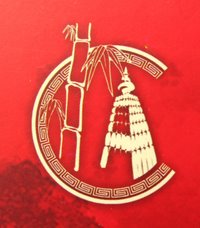

 CALCUTTA TUESDAY 3 JUNE 2008
CALCUTTA TUESDAY 3 JUNE 2008Deserted by 70 per cent of its inhabitants and left to rot by the civic authorities, the city’s decrepit Chinese quarter is suddenly getting the attention denied to it for four decades.
The Calcutta Municipal Corporation (CMC) on Monday announced plans to preserve “200-odd years of Chinese heritage”, its slumber broken by a Metro report on the realty threat to the building that houses the now-defunct fine-dining address, Nanking, and a shrine.
The announcement was made after a delegation from the Indian Chinese Association for Culture, Welfare and Development, led by Paul Chung, met municipal commissioner Alapan Bandyopadhyay to give its suggestions on preserving the Chinese legacy in central Calcutta and the city’s southern suburbs.
“We are concerned about the existence of our church and the site of Nanking Restaurant at Tiretta Bazar since the building has been sold off. We are happy to know that the municipal commissioner has asked police to protect the structure and revoked the permission given by the CMC to the building’s owner to tamper with the structure,” Chung said.
The association has proposed that the building be turned into a heritage institute or museum. Another suggestion is to construct a “China Gate” at Tiretta Bazar as a memorial to Chinatown, which once throbbed with life. “The civic commissioner asked for the proposals in writing,” Chung said.
Mayor Bikash Ranjan Bhattacharyya claimed that the CMC had already begun “extending civic amenities” to parts of the Chinese colony in east Calcutta. “China has reopened its consulate office in Calcutta after a gap of over 40 years and it is in the fitness of things that we do our bit to preserve the Chinese heritage.”
The city’s Chinese population is a mix of people of Cantonese, Hakka and Hupei origins. The first and largest Chinese settlement is still the one at Tiretta Bazar, now a claustrophobia-inducing maze of crumbling structures standing cheek by jowl with new but uglier buildings.
“This was once a home away from home for the Chinese, with all its temples, opium dens and gambling haunts co-existing with schools, clubs and eateries,” Chung said.
Heritage conservation experts believe any plan to resurrect the city’s Chinese legacy should begin from the horseshoe-shaped red tomb at Achipur, about 50 km away from the city. The tomb is that of the Chinese sailor Tai Pak Kung (also known as Yong Atchew), who set up the first sugar mill in Bengal in 1780 with 110 workers from his native country.
“That humble beginning 230 years ago led to the growth of the Chinese as a community. We need to preserve Atchew’s tomb first,” Chung said.
More than 70 per cent of the city’s 11,000-strong Chinese population in 1962 no longer lives in the city.
May surf the link :
www.telegraphindia.com/1080603/jsp/calcutta/story_9341845.jsp
TT

No comments:
Post a Comment